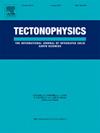The mechanisms that underlie crustal thickening and deformation along the northeastern margin of the Tibetan Plateau, as well as the interplay among different tectonic blocks and deep extension of the boundary faults, have been the subject of considerable debate. To investigate these issues, NE-oriented controlled-source seismic wide-angle reflection/refraction profiling was performed approximately 820 km from the Songpan-Ganzi Orogen to the Ordos Block via twelve controlled-source explosions. The resulting 2D velocity model indicates that crustal thickening in the Songpan-Ganzi and Western Qinling Orogens predominantly occurs in the lower crust, while the upper and lower crusts in the eastern segment of the Qilian Orogen have experienced concurrent thickening, primarily characterized by deformation via compressional shortening. The Songpan-Ganzi and Western Qinling Orogens exhibit similar lower crustal structures and may originate from the same tectonic unit. And a low velocity body of approximately 5.7 km/s that is situated around 25 km may serve as the medium that facilitates upper crustal decollement and deformation. The Eastern Kunlun fault converges at a decollement zone around 25 km in depth, indicating the fault is not a lithospheric fault propagating through the crust. However, the markedly distinct velocity on both sides of the northern margin fault in the Western Qinling Orogen indicate that the fault traverses the entire crust. The Haiyuan-Liupanshan fault converges in a wedge-shaped manner towards a decollement zone located approximately 25 km deep, and this fault does not separate the crust-mantle structures of the Tibetan Plateau from the Ordos Block. The significant structural differences between the Tibetan Plateau and the Ordos Block are likely due to pre-existing faults. These findings provide a novel geophysical reference model for the NE Tibet and significantly contribute to understanding the crustal deformation mechanisms and interplay among the tectonic blocks in this region.


